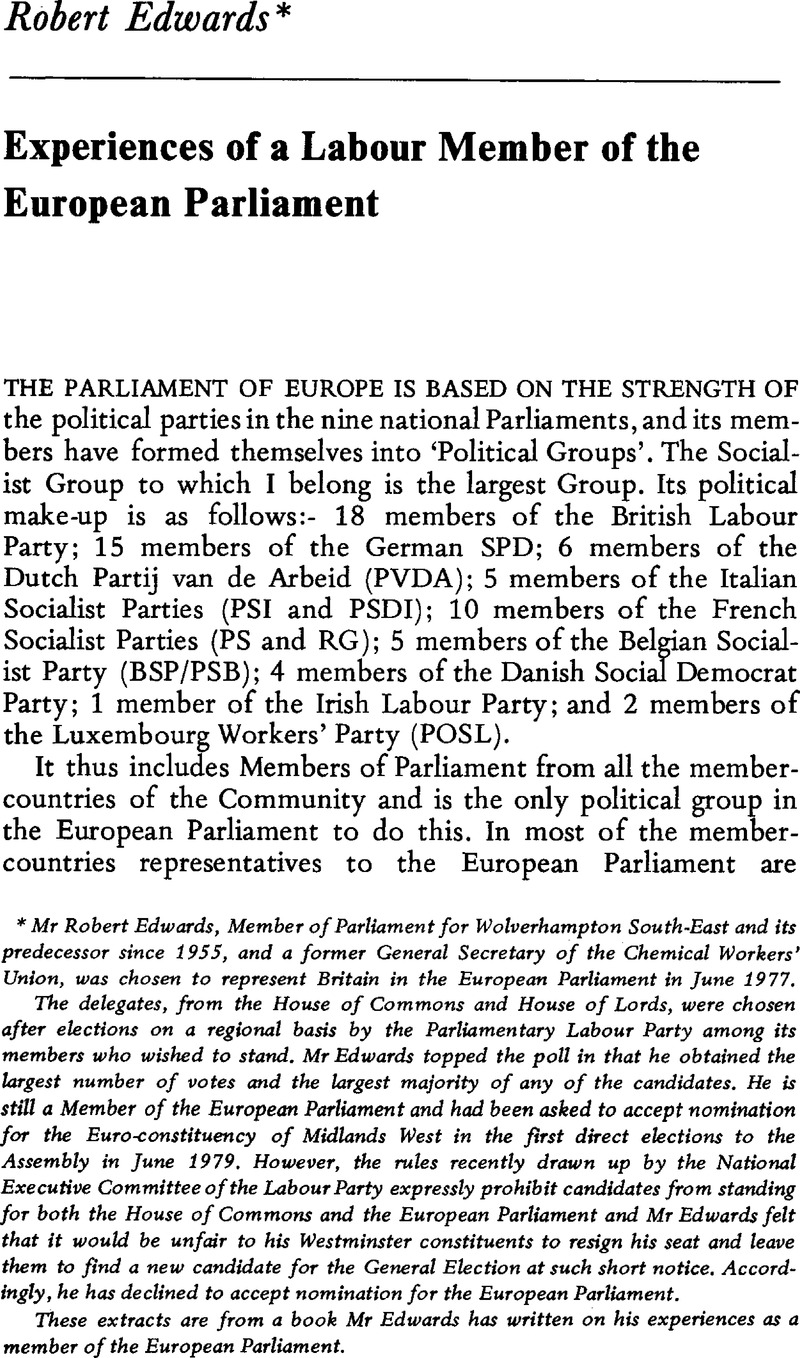Published online by Cambridge University Press: 28 March 2014

* This article is the result of research helped by a grant from the Nuffield Foundation, and is based on a paper given to the IPSA Research Committee on European Unification.
1 The political and economic background has been analysed in Pinder, J., ‘Economic Integration and East–West Trade: Conflict of Interests or Comedy of Errors?’, Journal of Common Market Studies, 09 1977 CrossRefGoogle Scholar (also to be published in F. Alting von Geusau (ed.), Uncertain Detente, Sijthoff for the John F. Kennedy Institute, forthcoming).
2 For an attempt to analyse these aspects, see Shishkov, Yuri, ‘Some Methodological Questions on Measuring the Degree or Progress of Economic Integration’, in Simai, M. and Garam, K. (eds), Economic Integration: Concepts, Theories and Problems, Budapest Akademiai Kiado, 1977.Google Scholar
3 Comprehensive Programme for the Further Extension and Improvement of Cooperation and the Development of Socialist Economic Integration by the CMEA Member Countries, Moscow, CMEA Secretariat, 1971.
4 See Kaser, Michael, Comecon: Integration Problems of the Planned Economies, Oxford University Press, 1967 Google Scholar, passim.
5 For examples of trade diversion resulting from specialization agreements and product working groups, see Axel Lebahn, Aussenpolitik, Hamburg, 2/78.
6 Myrdal, Gunnar, An International Economy: Problems and Prospects, London, Routledge & Kegan Paul, 1956, chapter IVGoogle Scholar. It should be noted that Myrdal uses the words integration and disintegration widely, to denote a rather general gain or loss of cohesion, rather than in the more precise senses subsequently applied to the analysis of ‘integration groups’.
7 See Agence Europe, Luxembourg, 28/29 October 1974 and 25 February 1976.
8 Agence Europe, 25 February 1976.